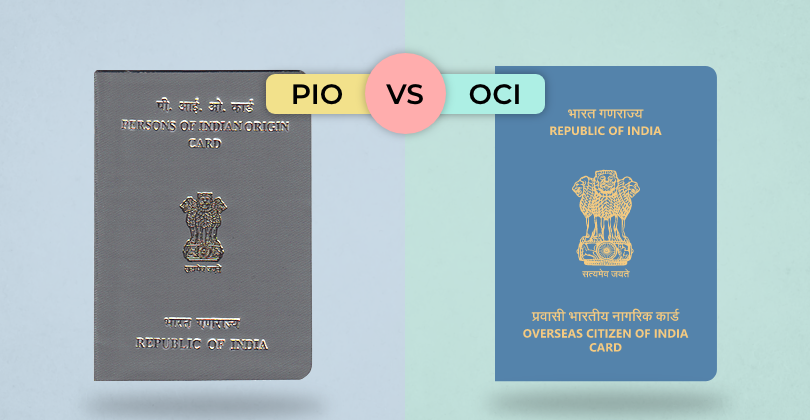Are you of Indian origin and living abroad? You've probably come across terms like PIO and OCI. These cards offer different benefits, but it can
In the complex world of finance, doctors often find themselves facing unique challenges when it comes to obtaining loans. Recognising the distinct financial needs of medical professionals, financial institutions have introduced specialised products called doctor loans.
These loans are tailored to address the specific circumstances and requirements of doctors, acknowledging the duration of their comprehensive education, potential delayed entry into the workforce compared to other professionals, and the financial burden of setting up a practice.
📗 Related reading- What is a Good Credit Score?
What Are the Loan Eligibility Criteria for a Doctor's Loan
Securing a professional loan for doctors involves meeting certain eligibility criteria, and these can vary across lenders. Generally, doctors who are eligible for these loans include medical practitioners, dentists, and other healthcare professionals. The eligibility criteria may involve factors such as the doctor's age, qualifications, and work experience.
-
Qualifications: Lenders often require that doctors have specific qualifications, such as an MBBS degree for medical doctors or a BDS degree for dentists. Specialised qualifications may also be considered.
-
Work experience: Some lenders may require a minimum number of years of professional experience. This is often to ensure that the doctor has a stable income and a track record of consistent earnings
-
Age criteria: Age can be a crucial factor in determining eligibility. Lenders might have minimum and maximum age limits for applicants, considering factors such as the length of the loan term and the borrower's expected retirement age.
-
Income stability: Lenders typically prefer applicants with a stable and regular source of income. This is often assessed by looking at the doctor's income tax returns, salary slips, or business income statements.
-
Credit score: Like any other loan, a good credit score enhances the chances of a loan approval. A higher credit score reflects a borrower's creditworthiness and ability to repay the loan.
What Are the Advantages of a Doctor Loan
Doctor loans come with several advantages that make them an attractive financial option for medical professionals.
-
Tailored for medical professionals: One of the primary advantages of doctor loans is that they are specifically designed for healthcare professionals. Lenders understand the unique financial journey of doctors, including extended education durations and delayed entry into the workforce.
-
Higher loan limits: Doctor loans often come with higher loan limits compared to traditional loans. This is because lenders recognise the potential for higher future earnings for doctors and are willing to extend larger loan amounts than other professionals.
-
Flexible repayment options: Recognising the varying income patterns of medical professionals, doctor loans may offer flexible repayment options. This can include features such as step-up EMIs, where the EMI increases gradually over the loan tenure, aligning with the expected increase in the doctor's income.
-
Quick approval process: Given the urgency that doctors may have in certain financial situations, doctor loans often have a faster approval process compared to conventional loans. This allows doctors to access funds promptly when needed.
-
Competitive interest rates: While interest rates can vary, doctor loans often come with competitive interest rates. Lenders may view doctors as low-risk borrowers due to their typically stable and high-income potential.
How Can a Doctor Apply for a Personal Loan?
Applying for a professional loan involves a systematic process, and doctors need to prepare well to increase their chances of approval.
-
Documentation: Gather all the necessary documents, including proof of identity, address, qualifications, and income. This may include PAN cards, Aadhar cards, educational certificates, bank statements, and income tax returns.
-
Credit score check: Before applying for a loan, it is advisable to check your credit score. A good credit score significantly improves the chances of loan approval. If there are any issues with the credit report, address them before applying.
-
Research lenders: Explore various lenders offering doctor loans and compare their terms, interest rates, and repayment options. Choose a lender that aligns with your financial needs and offers favourable terms.
-
Loan application: Once you select a lender, fill out the loan application form carefully. Provide accurate and complete information to avoid any delays in the processing of your application.
-
Verification process: After submitting the application, the lender will initiate a verification process. This may involve a background check on your professional qualifications, work experience, and financial stability.
-
Approval and disbursement: Upon successful verification, the loan will be approved, and the funds will be disbursed. The disbursal process may vary among lenders, but it typically involves the transfer of funds to your bank account.
-
Repayment planning: Develop a repayment plan based on your financial situation. Understand the terms of the loan, including the interest rate, tenure, and EMI amount. It is crucial to make timely payments to maintain a good credit history.
How to Calculate EMI on a Doctor's Loan
Calculating Equated Monthly Instalments (EMI) is a fundamental step in understanding the financial commitment associated with a loan. The EMI comprises both the principal amount and the interest spread over the loan tenure. Several online tools and mathematical formulas can help you calculate the EMI on a doctor's loan.
The formula for EMI calculation is:
-
EMI = [P x R x (1+R) ^N]/ [(1+R) ^ (N-1)]
Where:
-
P is the principal loan amount,
-
r is the monthly interest rate (annual rate of interest divided by 12 and multiplied by 100),
-
n is the number of monthly instalments (loan tenure in years multiplied by 12).
To simplify the calculation, various online EMI calculators are available. Here's a step-by-step guide to using an EMI calculator:
-
Enter the loan amount: Input the principal loan amount into the calculator. This is the initial amount you borrowed.
-
Input interest rate: Enter the annual rate of interest. This is the percentage charged by the lender on the loan amount.
-
Specify loan tenure: Input the loan tenure in years or months. This is the duration for which you will be required to repay the loan.
-
Click Calculate: After entering all the necessary details, click the Calculate button. The EMI calculator will generate the monthly instalment amount.
Understanding the EMI helps you plan your budget more effectively. It gives you a clear picture of the monthly financial commitment and allows you to assess whether the loan is manageable within your current income.
Conclusion
Doctor loans serve as a crucial financial tool for medical professionals, providing them with tailored solutions to address their unique financial needs. By understanding the eligibility criteria, advantages, application process, and EMI calculations, doctors can make informed decisions when considering these specialised loans.
As the financial landscape continues to evolve, doctor loans stand as a testament to the importance of customising financial products to cater to the diverse needs of professionals in specific sectors.
AUTHOR
KreditBee As a market leader in the Fintech industry, we strive to bring you the best information to help you manage finances better. These blogs aim to make complicated monetary matters a whole lot simpler.







